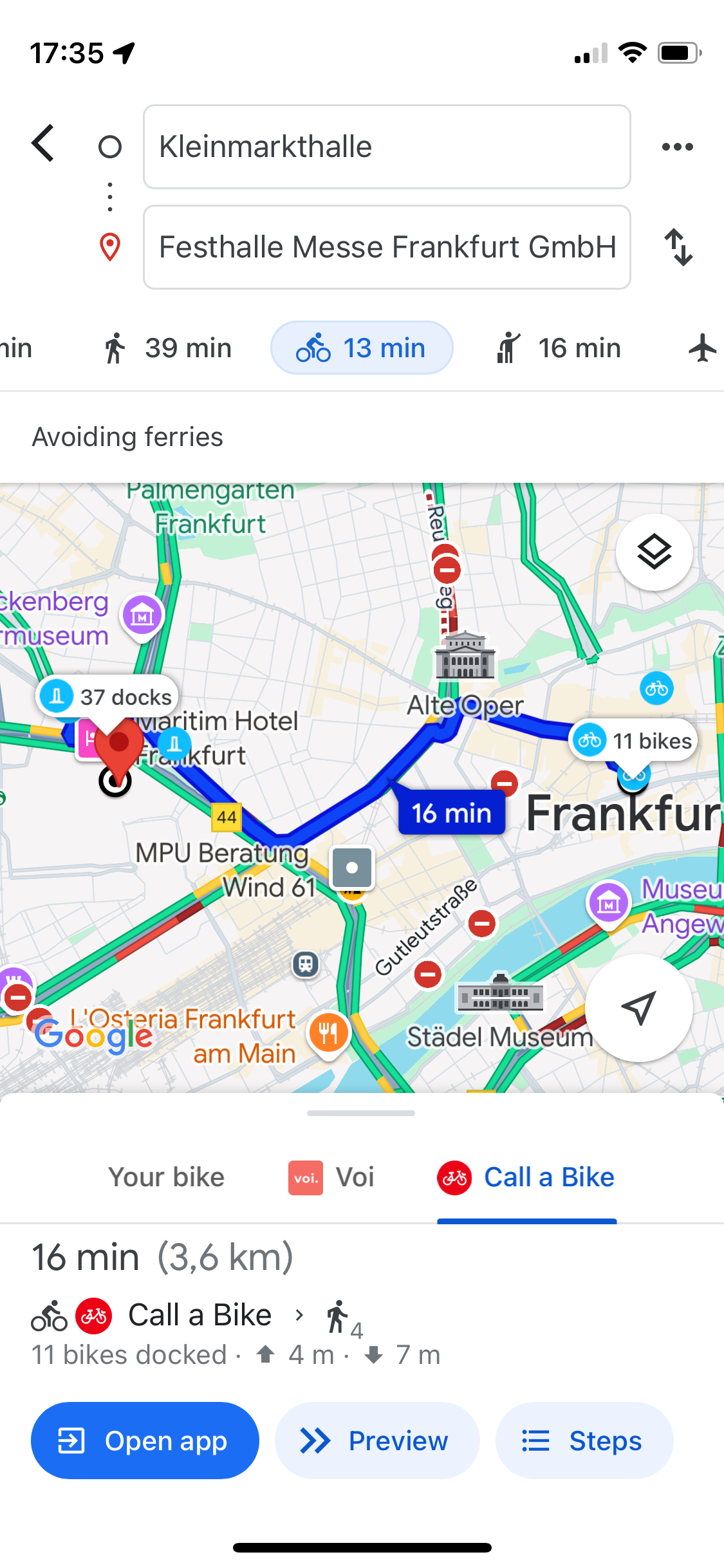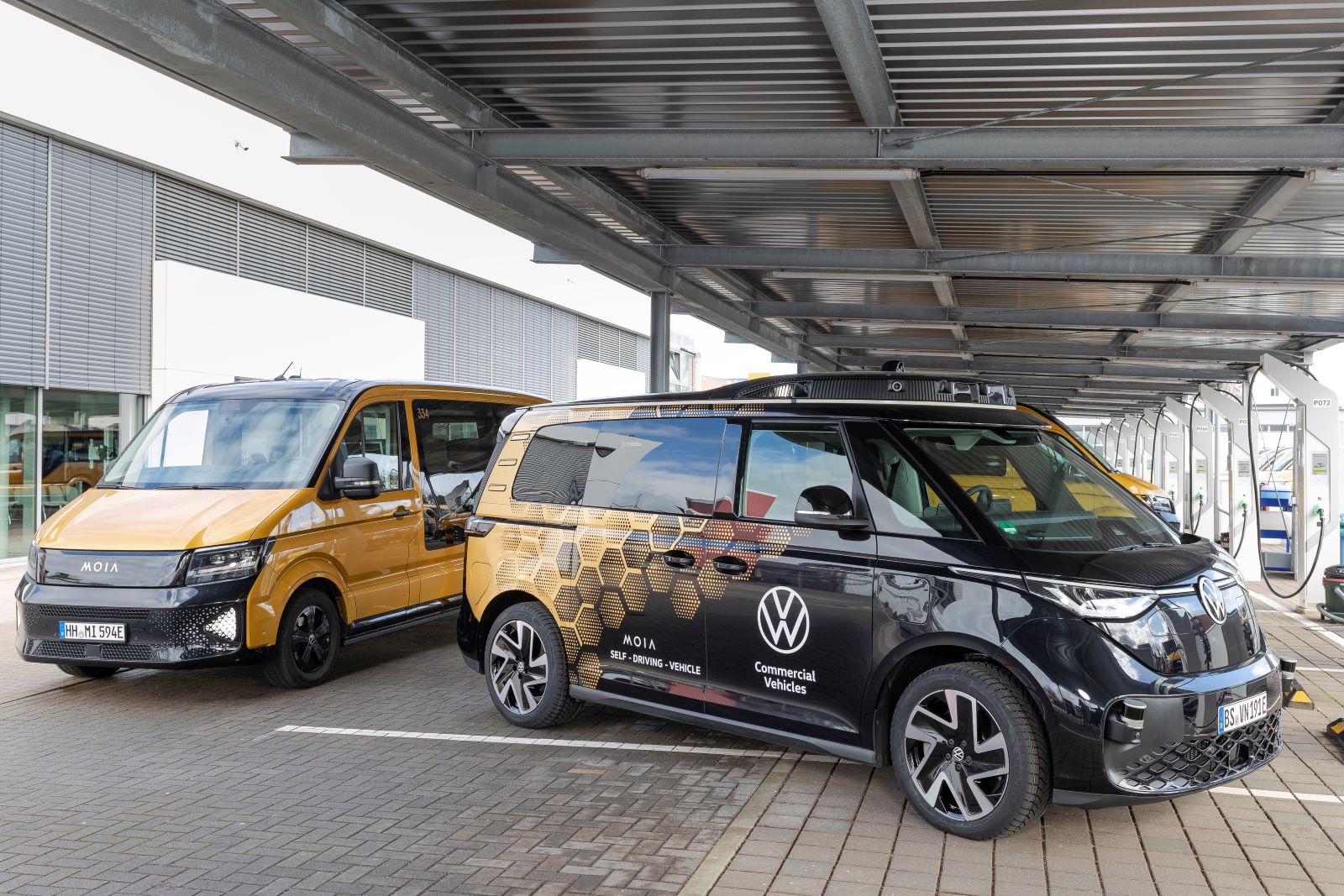
Beaming ourselves up – that would be the solution. However, while this method for an immediate change of location exists only in the realms of science fiction, the physics of digitalization imposes clear limits on mobility. And, ultimately, being mobile means precisely that: moving through a space in order to get from one location to another. Yet of course digitalization can contribute a great deal to making this movement faster, more convenient and, last but not least, more sustainable.
One of the most practical examples of this can be found in most people’s handbags or pockets: Google Maps or Apple Maps is preinstalled on every smartphone. However, most cellphones will no doubt also have additional applications for organizing individual mobility: be they the DB Navigator from German railways, the app from the local public transport network or a route planner such as Komoot or Bikemap.
Many of these applications inadequately termed ‘map apps’ are now powerful tools for planning and optimizing personal mobility. For cyclists, the map services provided by Google and Apple, for example, not only offer routes and information on the road condition but also a wide range of settings. They can for instance be adapted according to whether a user prefers routes with light traffic or as few hills as possible. The range of functions included in apps are also constantly being extended for user groups apart from car drivers. In such cases, users need to turn to the apps from specialists like Bikemap when looking for specific information, such as charging facilities for e-bikes.
In any case, the strengths of apps from the tech companies, Deutsche Bahn, Sixt car hire and the major local transport networks are focused elsewhere: namely, on the integration of services. In fact, for years now the providers have been adding more and more mobility options to their digital platforms. In addition to local public transport connections, the features allow user to not only find but also – in the best case – actually book car-sharing vehicles, e-scooters and hire bikes directly.
The development aims to provide a one-stop shop for mobility, which depending on the focus of the respective app, is able to cover all of the users’ mobility needs. This idea is shown most clearly in the concept of the mobility budget, which is a fixed sum that the employer makes available and can be ‘consumed’ with various providers. Many local transport networks, among them those in the cities of Munich, Berlin, Hamburg and Frankfurt, now offer their own mobility budgets. In the case of the provider Navit, which directly targets companies, the mobility budget also covers bicycle and car subscriptions.
The variety of digital solutions for orchestrating personal mobility is quite overwhelming. There seems to be no one-fits-all solution in view – and presumably no such solution actually exists. However, the development of increasingly more integrated and complex solutions does demonstrate the existence of a market for the digitalization of mobility and that the willingness to use such tools and services is growing.

As is happening everywhere, the digital transformation is also leading to radical innovation in the field of mobility. A range of services is not only exclusively accessible via digital interfaces. Mobility-as-a-service (MaaS), for example, would not be possible at all without digital technology: it involves ride-pooling offers such as Moia, where algorithms in the background plan routes and calculate fares. Another instance is start-ups such as GoFLux, which aims to make private offers of rides part of the local public transport system and has already enrolled several networks as partners. Soon it should be possible for the long heralded robot taxis to appear on German roads. And once they are on the road without any major problems, even the hitherto prevailing attitude of rejection in this country should quickly disappear.
Ultimately, it is presumably the many small steps of digitalization that will help to seamlessly integrate the numerous options of personal mobility into everyday routine. One such example is a new feature recently launched by the Hamburg Verkehrsverbund, the city’s public transport authority. It is now possible to track where the bus is at any particular time, which makes it easier to decide whether it is worth sprinting to the next stop. Another is the DB Navigator which now also displays Call-a-Bike hire cycles on a map for the first cities and soon aims to make them directly bookable through the app. Small features such as this are especially helpful for people with no local knowledge and help them to design their own transport chain as sustainably as possible right through to their destination.
Ultimately, the great potential in the interconnection and integration of digital mobility services is to be found in redefining the image of (local) public transport as an alternative to the car. This is because, taken alone, options such as lift sharing, ride pooling, bus and train have always appeared to a be a compromise involving sacrifices: of speed, simplicity, reliability and the private sphere. Not all of these actual or perceived deficits can be removed by means of digitalization. Yet in many cases their effect can be reduced.
Instead, digitally linking services allows them to exploit their common strengths. These forms of mobility are not only more environmentally friendly. Thanks to digitalization, apps are able to map complete transport chains from the house door through to the destination and, in the future, will also make it possible to book them. Even better, previous pain points, ranging from finding the right tariff through to payment, will be removed from the process since it will be possible to use the services as part of a flat rate or a mobility budget.
Ideally this will result in the use of the diverse forms of shared mobility becoming a matter of course, in the same way that most people use their own car today – or in the ideal case – their own bicycle. At least until the command “Beam me up!” becomes reality. That would really be the ultimate game changer in the digitalization of mobility.

